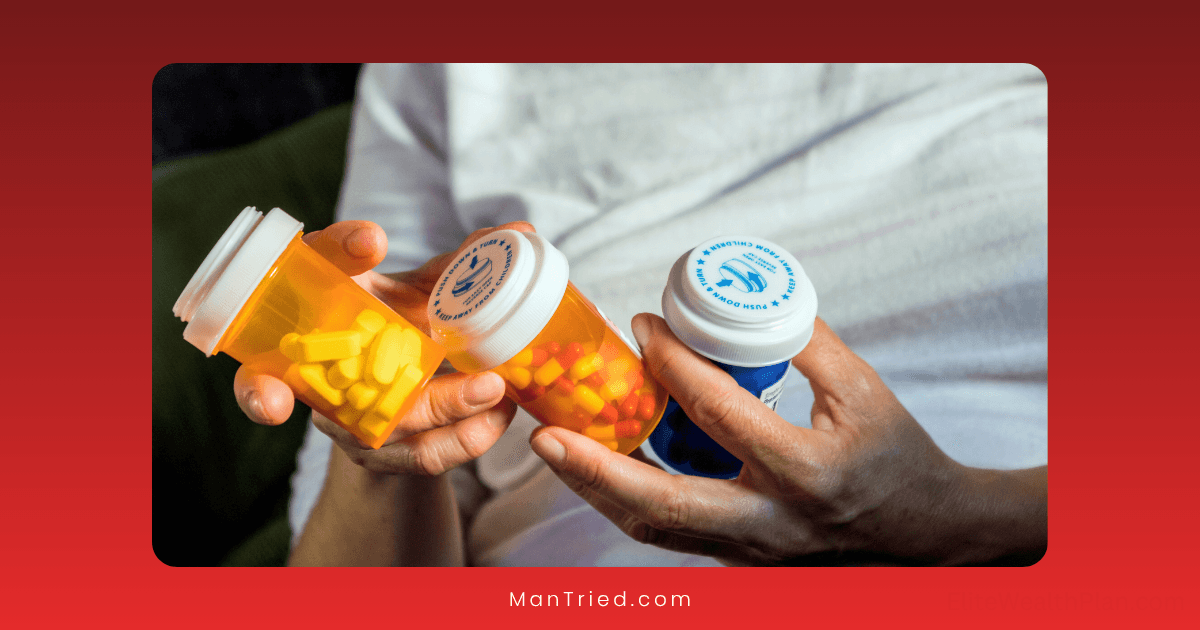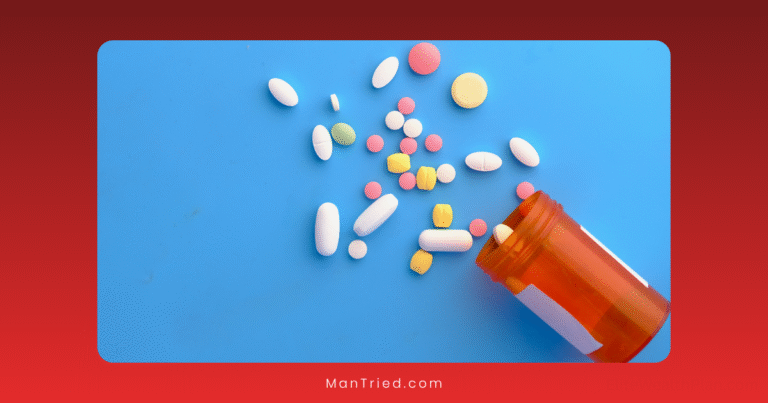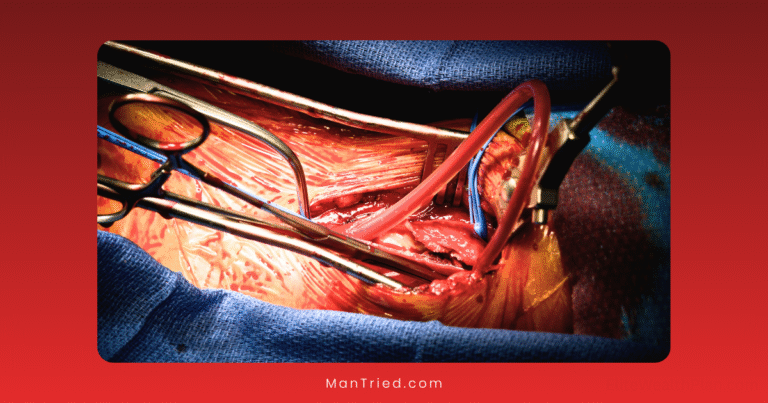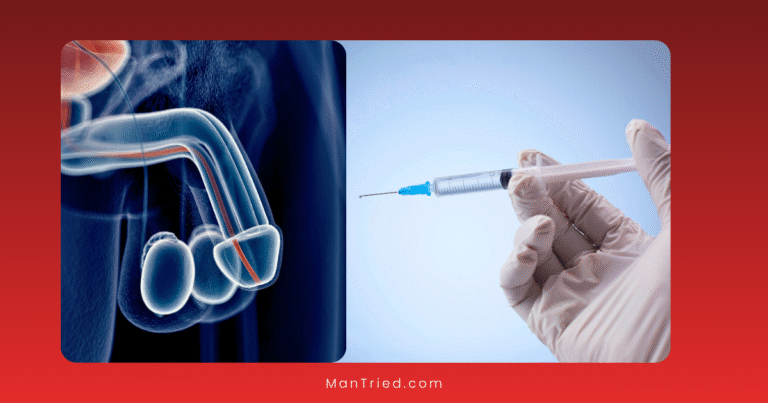When ED Medications Don’t Work: Next Steps and Alternatives

You’ve tried Viagra, Cialis, or other ED medications, but they just aren’t delivering the results you hoped for. First, know that you’re not alone—studies consistently show that 30-40% of men don’t achieve satisfactory results with standard ED pills. The good news? Several effective alternatives exist, ranging from simple lifestyle adjustments to advanced medical interventions.
This comprehensive guide explores why ED medications sometimes fail and outlines your next steps, from least to most invasive options.
Why ED Medications Might Not Be Working
Before exploring alternatives, it’s worth understanding why your current medication might be falling short. Research from Johns Hopkins Medicine identifies several common reasons:
Improper Usage
Studies reveal that up to 56% of “non-responders” simply weren’t using their medication correctly. Common mistakes include:
- Taking too low a dose: Many men need the maximum recommended dose for optimal results.
- Poor timing: Taking the medication too soon before sexual activity or after a heavy meal.
- Insufficient sexual stimulation: All ED medications require arousal to work effectively.
- Not trying enough times: Research shows that success rates improve after 6-8 attempts.
Underlying Medical Conditions
Certain health conditions can reduce medication effectiveness:
- Severe vascular disease: Significant blood vessel damage may prevent sufficient flow.
- Uncontrolled diabetes: High blood sugar damages nerves and blood vessels.
- Hormonal imbalances: Low testosterone can diminish response to ED medications.
- Neurological conditions: Nerve damage from surgery, injury, or disease.
Psychological Factors
Even with perfect physical health, psychological barriers can interfere:
- Performance anxiety: The pressure to perform can trigger stress responses.
- Depression or anxiety disorders: These conditions affect both desire and function.
- Relationship issues: Unresolved conflicts with your partner.
- Unrealistic expectations: Expecting instant, perfect results.
First Steps: Optimizing Current Treatment
Before abandoning medication entirely, consider these approaches:
1. Medication Adjustments
- Dose optimization: Research shows that increasing sildenafil to 200mg (under medical supervision) helped 24% of previous non-responders.
- Switching medications: If one PDE5 inhibitor doesn’t work, another might. Tadalafil (Cialis) has helped many sildenafil (Viagra) non-responders.
- Daily dosing: Taking a lower dose daily rather than occasionally can improve results for some men.
- Combination therapy: Adding testosterone replacement if levels are low can enhance medication effectiveness.
2. Lifestyle Modifications
Simple changes can significantly improve erectile function:
- Weight management: Losing just 5-10% of body weight improves erectile function in overweight men.
- Regular exercise: 30 minutes of moderate activity most days enhances vascular health.
- Dietary improvements: A Mediterranean diet has been linked to better erectile function.
- Smoking cessation: Quitting smoking improves blood flow throughout the body.
- Alcohol reduction: Limiting alcohol to 1-2 drinks occasionally can help.
- Stress management: Techniques like meditation and yoga reduce performance anxiety.
Beyond Pills: Non-Invasive Alternatives
If optimizing your current approach doesn’t help, several non-invasive options exist:
Vacuum Erection Devices (VEDs)
These external pumps create negative pressure to draw blood into the penis, with an elastic ring placed at the base to maintain the erection.
- Effectiveness: Up to 90% first-treatment success rate
- Advantages: No medications, immediate results, relatively inexpensive
- Considerations: May create an unnatural-feeling erection; requires some practice
Topical Treatments
The FDA recently cleared Eroxon (MED3000), the first over-the-counter topical gel for ED.
- How it works: Creates a cooling/warming sensation that increases blood flow locally
- Effectiveness: 65% of men achieved erections within 10 minutes in clinical trials
- Advantages: Rapid onset, minimal side effects (only 1-3% experience headaches/nausea)
- Best for: Men seeking spontaneity or those who can’t take oral medications
Low-Intensity Shockwave Therapy (LiSWT)
This emerging treatment uses sound waves to stimulate new blood vessel formation in the penis.
- Effectiveness: Approximately 42% success rate among PDE5 inhibitor non-responders
- Treatment protocol: Typically 6-12 sessions over several weeks
- Duration of results: Benefits can last 6-12 months
- Best for: Men with mild to moderate vascular ED
Minimally Invasive Options
For those who don’t respond to non-invasive approaches, these options offer higher success rates:
Intracavernosal Injection Therapy
These self-administered injections deliver medications directly to the penis, bypassing many of the limitations of oral medications.
- Effectiveness: 53-100% success rate, with most studies showing around 80%
- Onset: Typically 5-15 minutes
- Duration: 30-60 minutes
- Advantages: Works regardless of nerve damage; highly reliable
- Considerations: Requires comfort with self-injection; small risk of priapism (prolonged erection)
Common medications used include:
- Alprostadil (Caverject, Edex)
- Bimix (papaverine and phentolamine)
- Trimix (papaverine, phentolamine, and alprostadil)
Intraurethral Suppositories
A pellet of medication inserted into the urethra using a special applicator.
- Medication: Typically alprostadil (MUSE)
- Effectiveness: Lower than injections but preferred by some men
- Onset: 5-10 minutes
- Considerations: May cause urethral burning sensation
Surgical Solutions: When Other Options Fail
For men who don’t respond to other treatments, surgical implants offer a permanent solution.
Penile Implants (Prostheses)
These surgically placed devices allow men to create an erection on demand.
- Types:
- Inflatable implants: Fluid-filled cylinders with a pump system
- Semi-rigid rods: Maintain constant firmness but can be positioned as needed
- Effectiveness: Over 90% of patients can engage in normal sexual activity
- Satisfaction rates: Highest among all ED treatments (over 90%)
- Considerations: Surgical procedure with recovery time; irreversible; rare risk of infection (less than 2%)
- Best for: Men with severe ED who haven’t responded to other treatments
Addressing Psychological Factors
Don’t underestimate the importance of psychological support:
Psychosexual Counseling
- Individual therapy: Addresses performance anxiety and unrealistic expectations
- Couples therapy: Resolves relationship issues affecting sexual function
- Cognitive-behavioral therapy: Changes negative thought patterns
Research shows that combining psychological interventions with medical treatments significantly improves outcomes compared to either approach alone.
Emerging Treatments to Watch
Several promising therapies are in development or early clinical use:
Platelet-Rich Plasma (PRP) Therapy
- Uses the patient’s own blood components to potentially regenerate tissue
- Currently shows mixed results in clinical trials
Stem Cell Therapy
- Aims to regenerate damaged penile tissue
- Still experimental with inconsistent results
Gene Therapy
- Targets specific proteins involved in erectile function
- Promising animal studies but human applications still developing
Creating Your Personalized Treatment Plan
The most effective approach to ED is often a combination of treatments tailored to your specific situation. Consider these steps:
- Get a thorough evaluation: Ensure underlying conditions are properly diagnosed and treated.
- Start with the least invasive options: Try medication optimization and lifestyle changes first.
- Consider your preferences: Factor in spontaneity needs, comfort with technology, and partner input.
- Be patient: Some treatments require multiple attempts or take time to show full benefits.
- Address both physical and psychological factors: The mind-body connection is crucial for sexual health.
The Bottom Line
ED medication failure doesn’t mean you’re out of options. With the right approach and appropriate expectations, the vast majority of men can find a satisfactory solution. The key is working with healthcare providers who specialize in sexual medicine and are familiar with the full range of available treatments.
Remember that erectile dysfunction is often a symptom of other health issues. Addressing these underlying conditions not only improves sexual function but also enhances overall health and longevity.
Have you tried alternatives to ED medications? Share your experiences in the comments below.






